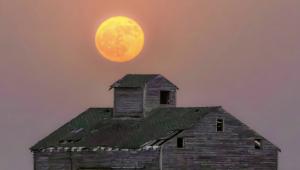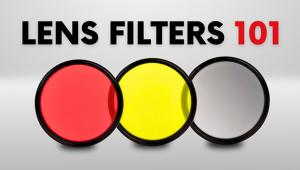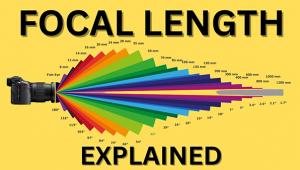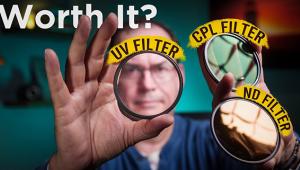Excellent post, I agree with you 100%! I’m always scouring the Internet for new information and learning whatever I can, and in doing so I sometimes leave comments on blogs. I don’t do it for SEO purposes necessarily, but to learn new things. htp://casinoko.com
Classic Cameras; The Top 20 Cameras Of All-Time Countdown; Schneider’s List, The Next Five—Do You Agree? Page 2
Despite being a landmark camera that changed the course of photographic history, the Maxxum 7000 is readily available at modest cost on the used camera market, because AF SLRs are sold on the basis of technology rather than intrinsic value. A Maxxum 7000 would certainly make a nice user collectible, and it will accept all Minolta AF (A-series) lenses, of which there are legions on the used market. The 7000 with a 50mm f/1.4 or f/1.7 Minolta lens sells for about $150-$200; the Maxxum 9000, about $50 more.
7) Kodak Super Six-20--1938
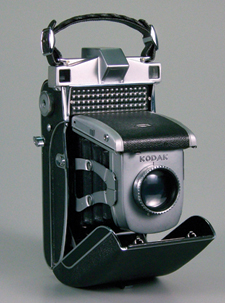 |
The world's first series-production autoexposure (AE) still camera,
the Super Six-20 was nearly 20 years ahead of its time, but it nevertheless
exerted a profound influence on camera makers as a technological benchmark.
With advances in electronics and metering technology, the concept of autoexposure
took the photographic world by storm after World War II, and was ultimately
developed into today's sophisticated, through the lens, multi-pattern,
multimode autoexposure systems. Understandably, Kodak introduced the Super Six-20
with considerable fanfare at the then staggering price of $225 (about half the
price of a new 1938 Ford).
A strikingly handsome folding rollfilm camera of futuristic post-deco clamshell
design, it produced eight 21/4x31/4 images per roll of 620 film and featured
a front-cell-focusing Tessar-formula 100mm f/3.5 Kodak Anastigmat Special lens
plus a giant 33/4x3/4" selenium cell under a metal "awning"
just below the rangefinder and separate viewfinder. On the left side of the
front standard, there's a manual-override aperture scale calibrated from
f/3.5 to f/22. Set it to the unmarked "automatic" setting past the
f/22 mark and you can see a little comb-toothed bar. As you press the right-hand
shutter-release slide inward, a moving needle (which is coupled to the three-bladed
iris diaphragm) becomes trapped between the teeth on the bar. Thus, Kodak originated
the trapped-needle system of automatic aperture control that was used (in refined
form) on many later shutter-priority AE cameras.
This system had its limitations: It was based on a single film speed (ASA 32);
only worked with shutter speeds from 1/25 to 1/200 sec (though the Super Six-20's
Kodak-made leaf shutter has speeds down to 1 second); did not do well in dim
light; and was no paragon of reliability. Considering its limitations, Kodak's
engineers wisely designed a complete range of manual control options into the
camera.
The lens, which focuses down to 4 ft, is capable of very sharp results. Fewer
than 1000 Super Six-20s had been built when the camera went out of production
in '45, and while it was a great image builder that demonstrated Kodak's
technological prowess, it was not a great sales success. Today, the Kodak Super
Six-20 is a quintessential collectible verging on being a museum piece. Clean,
functional examples are seldom offered for sale and are generally priced at
$3000 and up.
6) Polaroid 95--1948
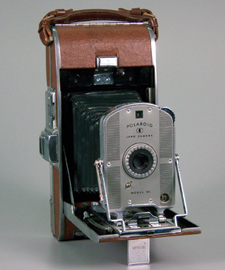 |
The first Polaroid Land Camera and the first commercially successful instant-picture
camera that developed the picture inside the camera with no user intervention,
the Polaroid 95, brainchild of Dr. Edwin Land and manufactured by the Polaroid
Corp. of Cambridge, Massachusetts, created a sensation when it was announced
in 1947 and became (to coin a phrase) an instant success when first offered
for sale in '48. Described by Minicam magazine (predecessor of Modern
Photography) as "a four-pound grandfather Kodak with a russet covering,"
it was a robust, beautifully made, brown leather-covered folding camera providing
eight 31/4x41/4 "pictures in a minute" per roll using the patented
diffusion transfer process.
After loading the film and pulling out a paper leader to position the first
frame, you took the picture, then pulled the paper leader again to draw the
exposed negative along with the print paper through the rollers. This burst
a pod of viscous processing agent (combined developer and fixer) and spread
it evenly between the two strips, developing the negative image. The unused
silver salts, made soluble by the fixer, diffused into the receiving layer of
the print paper, where they were reduced to silver. The whole process took one
minute, and at the end, you opened a flap at the back of the camera and peeled
the deckled-edge, sepia-colored print away from the negative strip, which was
discarded. In '50, a new orthochromatic black and white Polaroid film
with more neutral tones replaced the earlier brownish material, but it required
a protective coating after removal from a camera, so an applicator with neutralizing
lacquer was furnished with each roll.
The Polaroid 95 was so successful that it remained in production with only minor
changes until '61. All models feature heavy cast-aluminum construction
and folding bed. The original Polaroid 95 ('48-'53) has a 135mm
triplet lens with apertures from f/11 to f/45 and shutter speeds from 1/8 to
1/160 sec, both controlled by a single dial calibrated in Polaroid's own
light-value system (1-8).
The phenomenal success of the Polaroid 95 made Polaroid a household name and
a legendary stock market phenomenon and paved the way for what became the world's
most successful film-based system of instant-picture photography. This led to
such notable achievements as the pro-caliber Polaroid 110 series, the Polaroid
100 series based on the peel-apart Polacolor film pack, and the remarkable SX-70,
a folding SLR that ejects full-color prints that develop in daylight. The original
Polaroid 95 was produced in large numbers and is a readily available, though
now filmless, classic that sells for around $100 among collectors.
The Top 20 Cameras Of All-Time |
|
| 20) Kodak Instamatic 100 - 1963 | 10) Leica M3--1954 |
| 19) Reflex-Korelle - 1935 | 9) Konica C35AF--1979 |
| 18) Hansa Canon - 1935 | 8) Minolta Maxxum 7000--1985 |
| 17) Rolleiflex Automat - 1936 | 7) Kodak Super Six-20--1938 |
| 16) Zeiss Contax II - 1936 | 6) Polaroid 95--1948 |
| 15) Asahiflex IIB--1954 | 5) ????? |
| 14) Sony Mavica--1981 | 4) ????? |
| 13) Contax S--1949 | 3) ????? |
| 12) Hasselblad 1600F--1948 | 2) ????? |
| 11) Rolleiflex (Original Model)--1929 | 1) ????? |
Next in the Countdown to the final
5 |
|
- Log in or register to post comments















